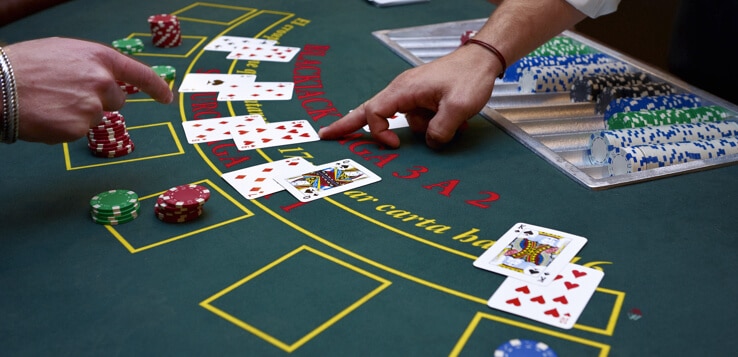With online casino play gathering steam in Pennsylvania — both because it’s still a relatively new entertainment option and because home is the safest place to be in the time of COVID-19 — more people than ever in the state are trying their hand (pun somewhat intended) at online blackjack.
The rules are simple: It’s you vs. the dealer, and whoever comes closest to 21 without going over wins.
Then there are the “rules” of proper play, which dictate when to hit, when to stand, when to double-down, and when to split. Those rules are also fairly simple, and most experienced players could recite them in their sleep.
But one element of the game that quite a few players don’t fully understand is the option to surrender. It’s an unfamiliar part of blackjack to some gamblers because it’s rarely offered in casinos.
But online in Pennsylvania, per PGCB rules, all blackjack games must make the surrender option available.
Use it at the right times, and it can make all the difference in whether a blackjack player posts a winning or losing session.
Many iCasinos, only two versions of blackjack
There are now 10 online casinos in Pennsylvania. Hollywood Casino was the first to launch, back in July, and DraftKings Casino became entrant no. 10 just last week.
Blackjack is easy to find at Hollywood, DraftKings, or most of the other PA online casinos, and anywhere you look, you’re going to find one or both of two options:
- IGT’s product, which allows you to play just one hand at a time
- NetEnt’s version, with the capability for up to three hands at once
Whichever game you choose, you’re getting some of the most player-friendly win rates in any online casino. The IGT game has a theoretical 98.71% return-to-player, while NetEnt’s theoretical RTP is 99.59%.
Simply put, the PGCB’s rules force these iCasinos to deal a version of blackjack that’s far more favorable to the player than what any brick-and-mortar casino offers.
When should you surrender?
The option to surrender means that, after the player and dealer are dealt their two cards (and after the dealer has checked for blackjack if an ace, king, queen, jack, or ten is showing), the player can forfeit the hand and lose just half the bet. So in a $10 hand of blackjack, you’re giving up a chance to play it out and return either $0 or $20. Instead, you receive a guaranteed return of $5, with the house keeping the other $5.
It follows that if you are more than 25% likely to win, you shouldn’t surrender, and if you’re less than 25% likely to win, the correct play is to wave the white flag.
So when do you make that play?
It varies depending on some of the other rules, such as whether the dealer hits on a soft 17 and how many decks are in the shoe. But in PA, there’s no such variation to consider. By PGCB rules, the dealer must stand on soft 17, and the games all use six- or eight-deck virtual shoes.
Given that, you should only consider surrendering with two starting hands: 15 and 16.
It’s natural to assume, with a 12, 13, or 14, that you’re a big mathematical underdog if the dealer is showing a ten or an ace. And indeed you are. But not quite big enough to justify surrendering.
If you have 15, you surrender when the dealer is showing an ace, face card, or ten. Otherwise, play it out (hitting against a seven, eight, or nine, and standing against anything between deuce and six).
If you have the dreaded 16, you’ll want to surrender against a dealer’s nine, ten, face, or ace.
Unless, that is, you’ve been dealt a pair of eights. In that case, no matter what the dealer is showing, the correct move is to split the eights.
Remember, these games only have a theoretical return-to-player as high as 99.59% if you make all the right decisions. And that includes knowing when to cut bait and cut your bet in half.
Photo courtesy of Shutterstock.com






